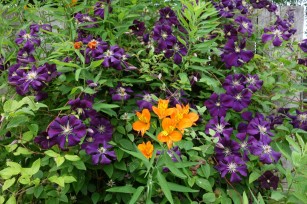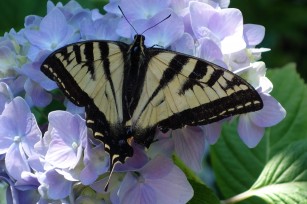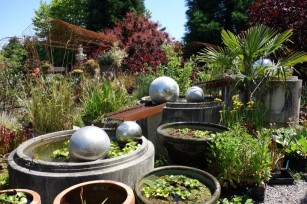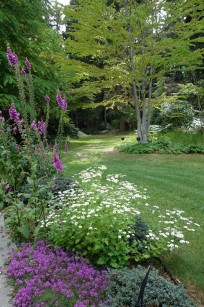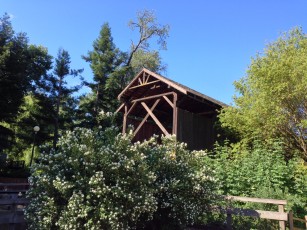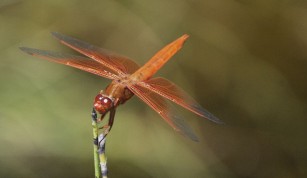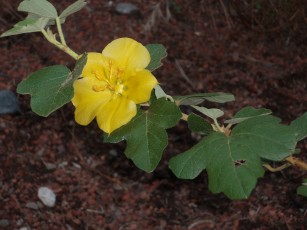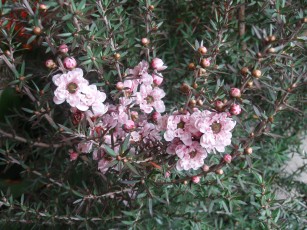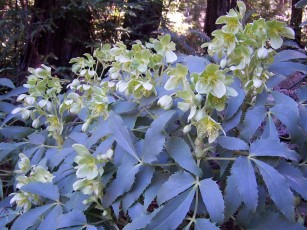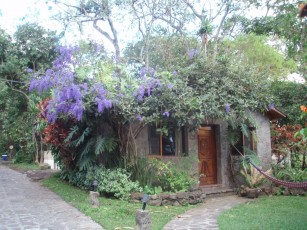 I started writing this column in October 2005. I remember the day the editor of the paper at that time gave me the go ahead and bestowed upon me the title, 'The Mountain Gardener'. I was so excited. I immediately started writing down every subject I could think of. In the world of horticulture there are myriad subjects to write about and nearly as many different plants. I'll never run of ideas.
I started writing this column in October 2005. I remember the day the editor of the paper at that time gave me the go ahead and bestowed upon me the title, 'The Mountain Gardener'. I was so excited. I immediately started writing down every subject I could think of. In the world of horticulture there are myriad subjects to write about and nearly as many different plants. I'll never run of ideas.
This week marks my 400th column. As I've traveled near and far over the years I love to pass on what's growing in that area whether it's in an arboretum, personal garden or the plants native to the region. Last week I took you with me as I traveled to Whidbey and Vashon Islands in the Puget Sound of Washington. The gardens and nurseries were spectacular. There were so many flowers to admire.
I'll never forget another trip I took to Guatemala, Honduras and Utila, an island off the coast of Honduras. It was on Utila that I saw plants growing in washing machine baskets in everyone's yard. I thought it was a clever way to re-use old appliances but wondered why there were so many old washing machines on a tiny island. A local laughed at me for asking about them and told me the baskets protect their plants from the big blue crabs that come out at night. Seems they'll sever the stems right at ground level and drag the whole plant into their hole. Also the baskets protect the plants from iguanas who will eat anything within two feet of the ground. And you thought deer were a problem.
Redwoods in Maui? I was skeptical too but during a trip to the islands I saw them first hand growing in the fog near Haleakala crater in Polipoli State Park.
Like our area that was clear cut in the 1800's for lumber and to fuel the lime kilns so too the forests of Maui were harvested in the 1700's. Sandalwood, exported to China for its fragrant aroma, became the island's first cash crop. Millions of trees were logged from the mountain forests. The men of the farming class were forced to cut trees, first on the lower slope and then farther up into the mountains, to pay for the chief's acquisitions of weapons, warships 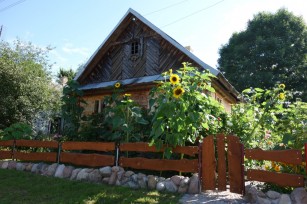 and European imports. Further damage was done by livestock brought by westerners – pigs, goats, sheep and especially cattle.
and European imports. Further damage was done by livestock brought by westerners – pigs, goats, sheep and especially cattle.
When the watershed was destroyed, the water disappeared for sugar cane, too. Reforestation started in the 1920's when nearly two million trees were planted annually. Fast growing species like redwoods, cedar, sugar pines and eucalyptus were planted to increase the watershed. While these introduced trees and shrubs prevented catastrophic destruction, they produced sparse forests with fewer species than the complex, multi-layered systems created by native forests.
In 2007 the area was devastated by a wildfire. It destroyed most of the forest. The redwood trees survived however. Now the area has been replanted with native trees plus 57,000 redwood seedlings. And that's why there are redwoods growing on Maui.
The gardens in eastern Poland were spectacular. The climate is influenced by the interior of the continent 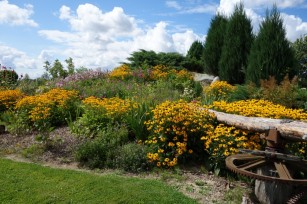 towards Russia and so receives summer rain. The wildflowers, vegetable gardens, perennial and annual flowers love the moisture and were in full bloom. The soil here, deposited by glaciers, is rich with sediment and nutrients. Sunflowers border neat plots of cabbage, beets, potatooes, cucumbers, lettuce and leeks. Black-eyed Susan cover the hillsides with swaths of gold blooms. Besides perennial plants, every garden was chock full of annuals, too. I never saw a nursery even in the outdoor markets so they must start plants from seed.
towards Russia and so receives summer rain. The wildflowers, vegetable gardens, perennial and annual flowers love the moisture and were in full bloom. The soil here, deposited by glaciers, is rich with sediment and nutrients. Sunflowers border neat plots of cabbage, beets, potatooes, cucumbers, lettuce and leeks. Black-eyed Susan cover the hillsides with swaths of gold blooms. Besides perennial plants, every garden was chock full of annuals, too. I never saw a nursery even in the outdoor markets so they must start plants from seed.
Polish houses are tidy with nary an abandoned car or farm implement to be seen. Brightly colored ivy geraniums tumble from window boxes. If vegetables or berries such as currants, blueberry, blackberry or raspberry are grown for sale these large plots are fenced with wire. Every 10 feet or so plastic bags are attached and wave in the breeze. I was told this keeps the wild boar, roe and red deer at bay.
I've traveled in southern Mexico twice in years past and enjoyed the Mexican weeping bamboo growing in the forests of Oaxaca. I even bought one to grow in a pot at my own house to remind me of this beautiful area.
On another trip I traveled from Chiapas to the Yucatan and all parts in between. Every area from the tropical lowlands to the mountains grow their own special mix of plants.
In the warmer spots bromeliad, tillandsia, lilies, elephant ears, bougainvillea, coffee, coleus, impatiens and marigolds are typically grown around the house. Scarlet runner beans morning glory, ficus trees, banana, pineapple, avocado, papaya and gum trees are also common. Red clay soil is typical here,
In the mountains, apples are the mainstay of gardens. Asclepias or butterfly weed grows here although I didn't see any monarchs A village called San Juan Chamula had dozens of greenhouses all growing marigolds.. The Indian people use lots of these flowers as traditional decorations in religious ceremonies. They are also used extensively on the Day of the Dead which follows Halloween. Every small house grows marigolds as well as maize, squash, fava beans and other edible greens.
I haven't touched on plants that I found on trips to British Columbia, Yosemite, Lassen, the Sierra, Big Sur or Death Valley. Guess I'll have to keep writing and visit memory lane another time.

